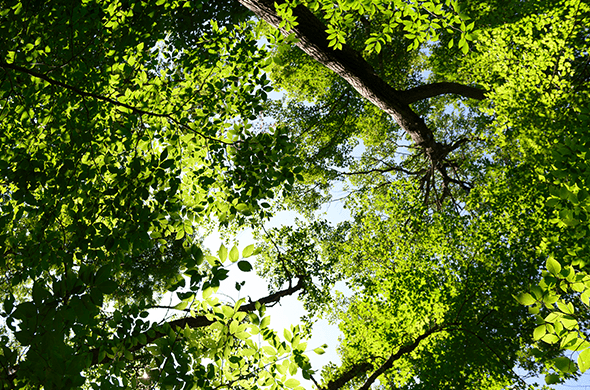Changing Seasonality & Nitrogen Oligotrophication in the Northern Hardwood Forest
Project Overview
 In most temperate forests, including those at Hubbard Brook, the availability of nutrients, especially nitrogen, limits rates of tree growth. In recent decades, much research has focused on how human activities have increased inputs of atmospheric nitrogen in rain, snow, and dust to forests. However, these atmospheric sources of nitrogen are now declining over large areas of North America. There have been remarkable declines in the availability of nitrogen for trees in some temperate forests that cannot be explained by declines in atmospheric inputs alone. There are some concerns that diminished nitrogen availability could reduce rates of forest productivity. Potentially, nitrogen limitation could reduce the capacity of forest ecosystems to respond to disturbances and environmental change.
In most temperate forests, including those at Hubbard Brook, the availability of nutrients, especially nitrogen, limits rates of tree growth. In recent decades, much research has focused on how human activities have increased inputs of atmospheric nitrogen in rain, snow, and dust to forests. However, these atmospheric sources of nitrogen are now declining over large areas of North America. There have been remarkable declines in the availability of nitrogen for trees in some temperate forests that cannot be explained by declines in atmospheric inputs alone. There are some concerns that diminished nitrogen availability could reduce rates of forest productivity. Potentially, nitrogen limitation could reduce the capacity of forest ecosystems to respond to disturbances and environmental change.
This research is testing the idea that reductions in nitrogen availability relative to demand by plants, called nitrogen oligotrophication, are driven by seasonal changes during autumn and spring. This idea requires a major reevaluation of temperate forest nitrogen cycling. Specifically, nitrogen oligotrophication in hardwood forests at Hubbard Brook may be driven by increasing nitrogen demand by plants, caused by rising temperatures, longer growing seasons, and other environmental changes. In turn, these processes lead to greater nitrogen resorption by trees in autumn, increased ratios of carbon to nitrogen in litter, and greater net immobilization of nitrogen by soil microbes in the following spring. However, the timing of snowmelt and soil freezing in spring may further affect net mineralization and nitrogen availability for plants. These hypotheses are being tested with a combination of observational, experimental, and modeling approaches along an elevation/aspect gradient at Hubbard Brook that creates significant variation in seasonal and annual climate.
This project is also developing a set of education and outreach activities including development of a new strategy for mentoring underrepresented minority undergraduate students in conducting research. Outreach activities include public engagement with stakeholder groups and integration of research results into local environmental outreach and science communication programs. Training will be provided to several undergraduate students, graduate students, and a postdoctoral researcher.
This work is funded by an NSF Grant: Collaborative Research: Changing Seasonality and Nitrogen Reductions in the Northern Hardwood Forest
Principal Investigators:
Pamela Templer, Boston University
Charles Driscoll, Syracuse University
Timothy Fahey, Cornell University
Sarah Garlick, Hubbard Brook Research Foundation
Peter Groffman, City University of New York
Andrew Reinmann, City University of New York
